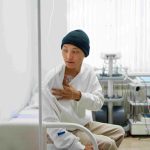In East Asian countries like Taiwan, Shanghai and South Korea, lung cancer screening with low-dose CT scans has become increasingly common, even among people who have never smoked. As a result, many non-smokers are being diagnosed with lung cancer at an early stage, giving them a better chance of successful treatment and a longer life. But hold on—there’s a catch. A large number of these diagnosed individuals undergo lung resection surgery, only to find that their cancer is of a slow-growing type, the kind that people die with, not die from. This raises a crucial question: is screening truly saving lives, or is it leading to unnecessary treatments for cancers that may never have caused harm?
We fear lung cancer because it is often diagnosed at a late stage, where there are limited treatment options and poor survival rates. With growing awareness that even secondhand and thirdhand smoke can increase lung cancer risk, it seems logical to take a proactive approach—walking into a private hospital and requesting a CT scan for early detection. However, be cautious, because what we’ve observed in East Asian countries, lung cancer is detected in non-smokers at nearly twice the rate seen in studies on heavy smokers and many of these detected cancers appear to be adenocarcinoma, slow growing and non-lethal type of lung cancer that may not require aggressive treatment.
Lung cancer screening among East Asian women has led to a surge in lung surgeries, often without less invasive testing like bronchoscopy for biopsy to start with. It is like getting a mastectomy for every breast lumps we see on breast imaging! A Taiwanese study found that within three months after CT screening, only 8% had a biopsy, while 92% went straight to surgery. 25% of lung cancer surgeries in the U.S. lead to major complications compared to 16% for biopsies and negative outcomes from medical procedures in the hospital settings are often much higher than what was reported in clinical trials. If screening truly reduces lung cancer deaths, then these risks might be justified. However, without clear evidence, we might be putting ourselves towards potentially unnecessary and harmful procedures.
With high rate of overdiagnoses of non-aggressive and non-lethal cancers in East Asia, the number of late-stage diagnoses stay the same. Screening creates the illusion of success by detecting more early-stage cases, which dilutes the proportion of late-stage diagnoses without actually lowering their incidence. In Taiwan, the percentage of women diagnosed with late-stage lung cancer dropped from 90% in 2004 to 58% in 2018, yet the total number of late-stage cases remained unchanged. Screening also skews survival statistics—by detecting cancer earlier, it artificially inflates survival rates without necessarily saving lives. In South Korea and Taiwan, five-year survival now exceeds 50%, compared to 25% in England and 30% in the U.S., but this is largely due to lead time and overdiagnosis bias, not improved outcomes.
A past study found that out of 88 lung cancer deaths prevented by screening, only one was in a low-risk person. This highlights how little benefit screening offers to never-smokers while exposing many to unnecessary medical interventions. Instead of assuming screening is helpful, we need strong clinical trial evidence to prove it saves lives. Relying on mathematical models or small studies can be misleading, especially when healthier people are more likely to get screened. Before you decide on lung cancer screening, remember that it is not just a routine test. It can lead to more investigations, potential complications, and added anxiety. Weigh the risks and benefits carefully.





